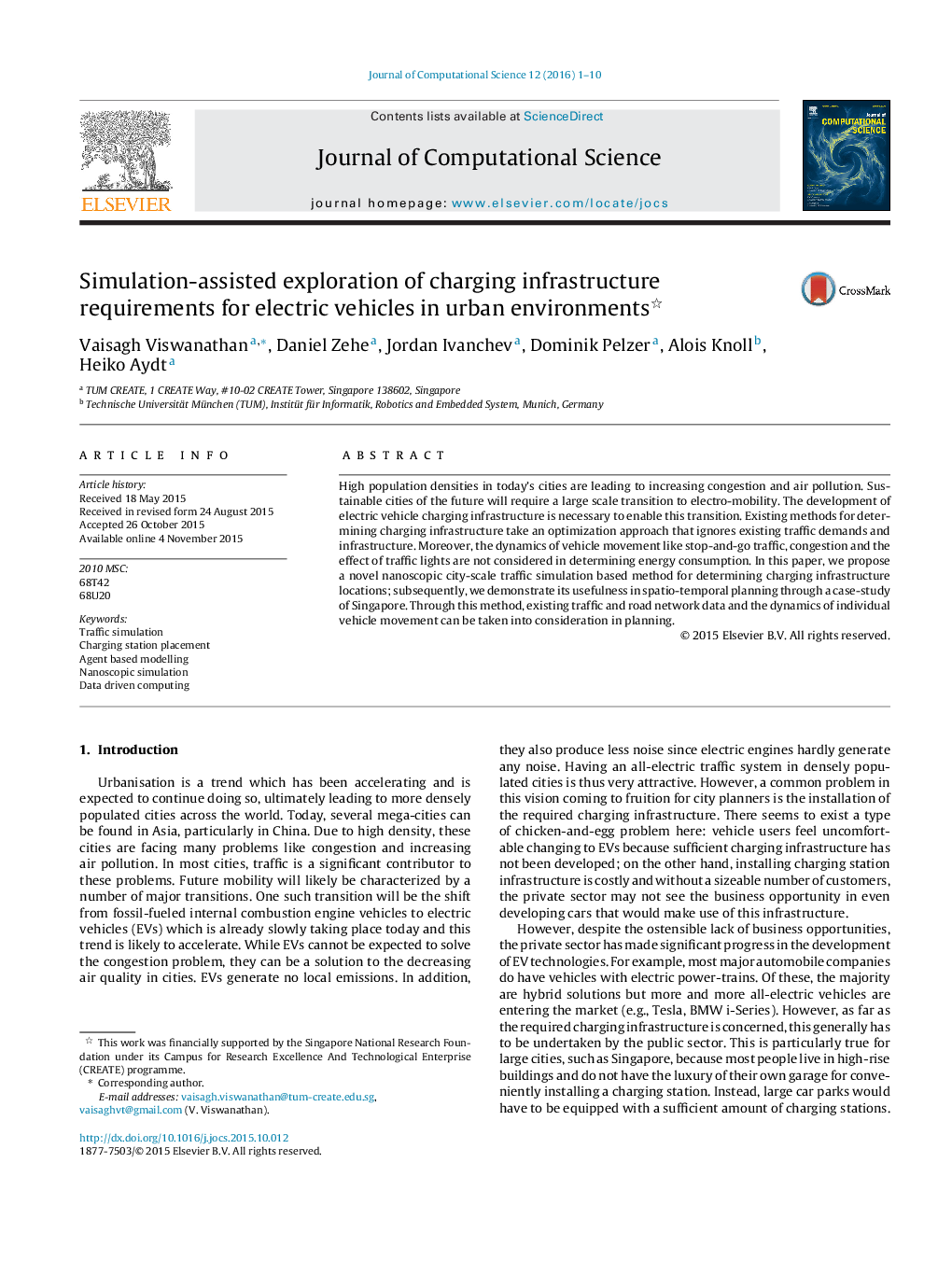| Article ID | Journal | Published Year | Pages | File Type |
|---|---|---|---|---|
| 430060 | Journal of Computational Science | 2016 | 10 Pages |
•A data-driven city-scale nanoscopic traffic simulation model is proposed.•A spatial and temporal exploration of charging infrastructure requirements is performed.•Singapore case-study reveals three locations for initial charging station placement.
High population densities in today's cities are leading to increasing congestion and air pollution. Sustainable cities of the future will require a large scale transition to electro-mobility. The development of electric vehicle charging infrastructure is necessary to enable this transition. Existing methods for determining charging infrastructure take an optimization approach that ignores existing traffic demands and infrastructure. Moreover, the dynamics of vehicle movement like stop-and-go traffic, congestion and the effect of traffic lights are not considered in determining energy consumption. In this paper, we propose a novel nanoscopic city-scale traffic simulation based method for determining charging infrastructure locations; subsequently, we demonstrate its usefulness in spatio-temporal planning through a case-study of Singapore. Through this method, existing traffic and road network data and the dynamics of individual vehicle movement can be taken into consideration in planning.
